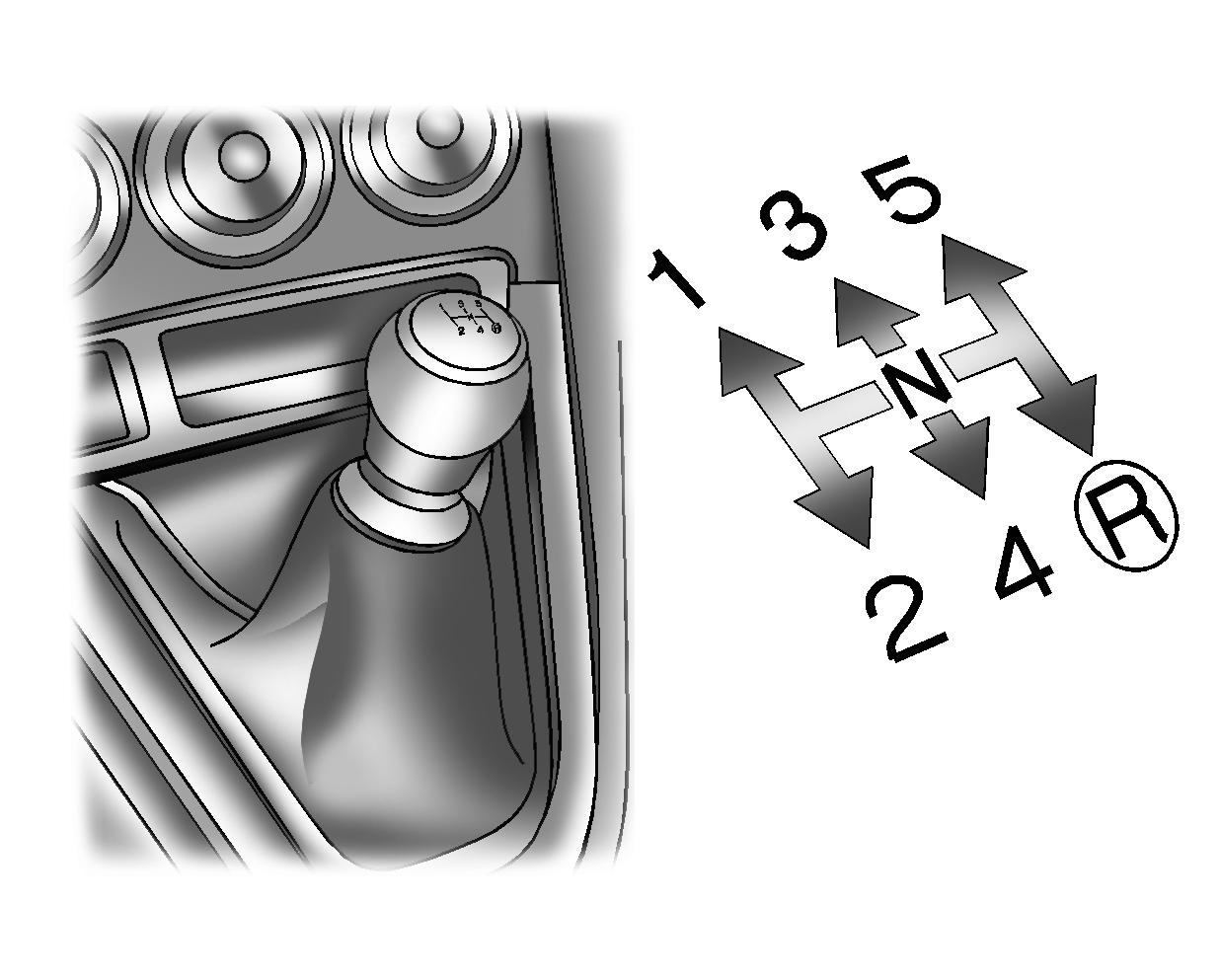
1 (First): Press the clutch pedal and shift into 1 (First). Then, slowly let up on the clutch pedal as you press the accelerator pedal.
You can shift into 1 (First) when you are going less than 20 mph (32 km/h). If you have come to a complete stop and it is hard to shift into 1 (First), put the shift lever in NEUTRAL and let up on the clutch. Press the clutch pedal back down. Then shift into 1 (First).
2 (Second): Press the clutch pedal as you let up on the accelerator pedal and shift into 2 (Second). Then, slowly let up on the clutch pedal as you press the accelerator pedal.3 (Third), 4 (Fourth), 5 (Fifth): Shift into 3 (Third), 4 (Fourth) and 5 (Fifth) the same way you do for 2 (Second). Slowly let up on the clutch pedal as you press the accelerator pedal. To stop, let up on the accelerator pedal and press the brake pedal. Just before the vehicle stops, press the clutch pedal and the brake pedal, and shift to NEUTRAL.
Neutral: Use this position when you start or idle the engine.
R (Reverse): To back up, press down on the clutch pedal and shift into R (Reverse). Let up on the clutch pedal slowly while pressing the accelerator pedal.
Notice: Shifting to R (Reverse) while the vehicle is moving forward could damage the transmission. The repairs would not be covered by the vehicle warranty. Shift to R (Reverse) only after the vehicle is stopped.
Also, use R (Reverse) along with the parking brake for parking your vehicle.
Shift Speeds
Caution: If you skip a gear when you downshift, you could lose control of the vehicle. You could injure yourself or others. Do not shift down more than one gear at a time when you downshift.
This chart shows the maximum allowable speeds in each gear when maximum acceleration is necessary.
Manual Transmission Recommended Shift Speeds
Engine | 1.8L |
|---|---|
1 to 2 | 34 mph (55 km/h) |
2 to 3 | 56 mph (91 km/h) |
3 to 4 | 82 mph (132 km/h) |
4 to 5 | 121 mph (195 km/h) |
Engine | 2.4L |
|---|---|
1 to 2 | 31 mph (50 km/h) |
2 to 3 | 53 mph (86 km/h) |
3 to 4 | 82 mph (132 km/h) |
4 to 5 | 112 mph (181 km/h) |
If your speed drops below 20 mph (32 km/h), or if the engine is not running smoothly, you should downshift to the next lower gear. You may have to downshift two or more gears to keep the engine running smoothly or for good performance.
